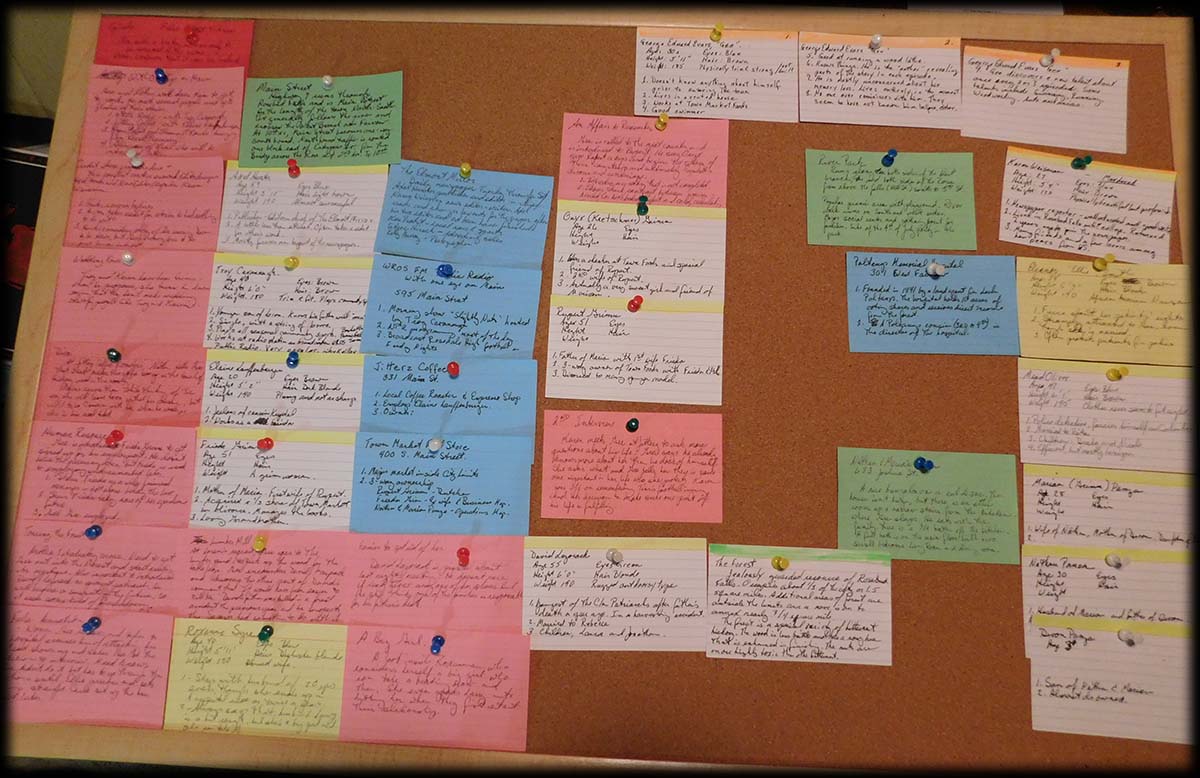8/18/2024
The Plot Thickens
This is number seventy-five in the blog series, “My Life in Erotica.” I encourage you to join my Patreon community to support my writing.

IT HAS BECOME increasingly important to me to have a solid story arc in mind before I start writing. That might sound like an obvious statement. How can you start writing a novel before you have a story arc? Surprisingly, it’s not uncommon.
I first encountered National Novel Writing Month (NaNoWriMo) in 2004 and have participated for twenty years, ‘winning’ every year. A NaNoWriMo ‘win’ is completing 50,000 words of a new story in 30 days. If you have followed me for any length of time, you know that it is pretty common for me to complete the 50,000-word goal in as little as eight days. But it wasn’t always so.
My first NaNoWriMo ‘novel’ was Willow Mills. I’d conceived the idea of creating a small Indiana town, not unlike Garrison Keillor’s Lake Woebegon. It wasn’t really a single story, but was a series of short pieces describing the town and citizens of Willow Mills. Each ‘chapter’ started with the front page of the weekly newspaper of the town that said what had happened this week in 1999. This was followed by short stories that expanded on the background of the people and places mentioned in the articles. It was loosely set around references to Albert Bailey’s Prize Bull, the story of which was saved until the end.
It was approaching midnight on November 30 when I uploaded my story and discovered I was a thousand words short of the 50,000-word goal. I quickly had to come up with additional stories and statements that would extend the word-count past the goal. I did it with quotes from all the citizens of the town on what it meant to enter a new millennium.
The whole concept was fueled by Chris Baty’s (then the president of NaNoWriMo) book No Plot? No Problem! He emphasized that you didn’t need a plot to write a book, but just to create some characters and let them take you where they wanted to go. Sadly, many people (myself included) assumed that writing a draft of a story like that was all that was necessary.
It would be hard to count the number of books that have been published (or serials on SOL) that never did get to the story. I think I mentioned that last week.
Fortunately, not all my stories are such stream of consciousness works as that first NaNo effort. Usually, I have a pretty good idea what the plot of the book will be and how I’m going to get there. Sometimes it’s more vague than others, but I have good editors who tend to help pull my vision into focus.

When I wrote Nathan Everett’s City Limits, I had in mind a very specific story the book would tell. It was not just a series of events that tell what life was like living without a memory. It held the goal of uniting Gee with the Forest and breaking down fences and bigotry and child trafficking because the guy didn’t know any better.
I knew when I wrote it there would be a sequel. It was the story of the children who had been trafficked through the Wild Woods and how only Gee—without a memory—could truly relate to them and bring them back into the world. It was not simply a series of events that happened. There was a point to them.

My plotting of the book included hundreds of variously colored index cards with themes, action, places, characters, and other information on them. I worked and reworked my storyboard from the top down, plotting out the overall story and then breaking it into episodes as if it were seasons one and two of a television miniseries. The entire series had a plotline, but so did each of the two books, and each chapter within them. There is a reason these have become two of my most successful books. They have a compelling story.
The Man Without a Memory eBook series with both City Limits and Wild Woods is available as a collection or individually on Bookapy. Paperbacks are available online.

There were advantages to working with the storyboard. I could see at a glance whether the action in each episode contributed to the storyline for that chapter. I could rearrange the cards and move pieces to different episodes—or, indeed, from one book to the other. But carrying a cork board, pins, and nearly a thousand index cards from place to place as I worked on the story was cumbersome. I was constantly riffling through all the cards looking for the right piece. When was it right to talk about Jitterz Coffee Shop? How were various people interrelated?
This is not the only technique I have used to organize the plot of my stories. And most recently, I have worked with the Save the Cat! Writes a Novel beat sheets. This book by Jessica Brody is based on the phenomenally successful guide to screen writing by Blake Snyder called Save the Cat! She divides the structure of a novel into fifteen logical beats that describe what successful novels generally look like.
I began exploring the technique seriously with my recently published Nathan Everett novel, The Staircase of Dragon Jerico. I also used several other techniques in that book and overall, I consider it quite successful as a contemporary romance.
More seriously, I structured my new Devon Layne novel, The Strongman, entirely in the three acts and fifteen beats of the Save the Cat! method. I had the theme and message of the story worked out, and even the overall plot of the book, but the beat sheets forced me to describe the progress in terms that would drive the story forward.
Now I have begun my next Devon Layne novel only after I completed a structural beat sheet. It includes the following:
A logline or brief pitch for the story.
A one-page synopsis.
Fifteen beats in three acts as described in the method. (% indicates how far into the book the beat takes place.)
Act One
1. Opening Image (0%-1%)
2. Theme Stated (5%)
3. Setup (1%-10%)
4. Catalyst (10%)
5. Debate (10%-20%)
Act Two
6. Break into 2 (20%)
7. B Story (22%)
8. Fun and Games (20%-50%)
9. Mid-point (50%)
10. The bad guys close in (50%-75%)
11. All is Lost (75%)
12. The Dark Night of the Soul (75%-80%)
Act Three
13. Break into 3 (80%)
14. Finale (80%-99%)
15. Final Image (99%-100%)

You might be able to tell just from that how the book is structured, but next week, when I announce the release of The Strongman, I’ll expand on what goes into the fifteen beats that helps drive the plot forward—even when the book includes erotica.
Please feel free to send comments to the author at devon@devonlayne.com.
